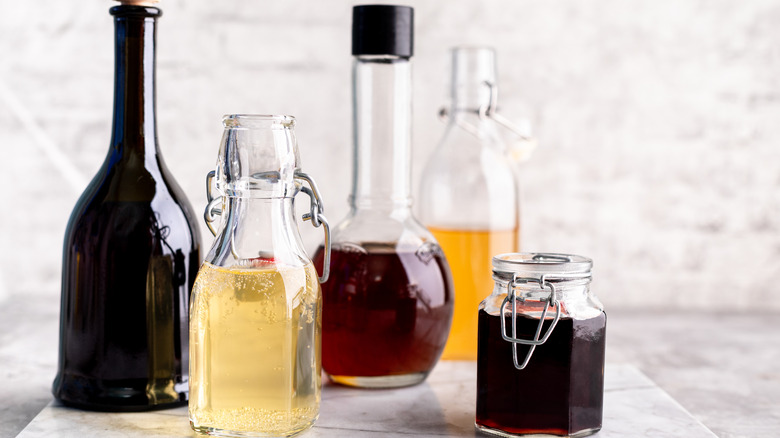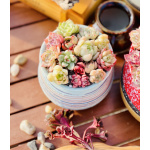Crafting the Perfect White Vinegar: A Step-by-Step Guide

Introduction: White vinegar is a versatile ingredient used in cooking, cleaning, and preserving foods. While it's readily available in stores, making your own white vinegar at home can be a rewarding and cost-effective endeavor. Follow this step-by-step guide to learn how to make your own batch of homemade white vinegar.
Ingredients:
- 1 gallon water
- 4 cups white grape juice or white wine
- 2 cups sugar
Equipment:
- Large glass or ceramic container with a wide mouth
- Cheesecloth or breathable cloth
- Rubber band or string
Instructions:
-
Prepare the Fermentation Container: Clean and sterilize a large glass or ceramic container with a wide mouth. Ensure that it is completely dry before proceeding.
-
Mix Ingredients: In the sterilized container, combine the water, white grape juice or white wine, and sugar. Stir well to dissolve the sugar completely.
-
Cover and Secure: Cover the container with a piece of cheesecloth or breathable cloth, securing it tightly with a rubber band or string. This allows air to flow into the container while preventing debris or insects from getting inside.
-
Fermentation Process: Place the container in a warm, dark place with a consistent temperature, ideally between 70-80°F (21-27°C). Allow the mixture to ferment undisturbed for about 2-4 weeks. During this time, naturally occurring bacteria will convert the sugars into alcohol.
-
Monitor Progress: Check the container periodically to observe the fermentation process. You may notice bubbles forming on the surface, which is a sign that fermentation is occurring. The liquid may also develop a slightly sour aroma as it transforms into vinegar.
-
Taste Test: After 2 weeks, begin tasting the liquid periodically to monitor its progress. Once it reaches your desired level of acidity and flavor, it is ready to be strained and bottled.
-
Strain and Bottle: Using a clean cheesecloth or fine-mesh sieve, strain the liquid to remove any solids or sediment. Transfer the strained vinegar to clean, sterilized bottles or jars for storage.
-
Storage: Store the bottled vinegar in a cool, dark place away from direct sunlight. Properly sealed and stored, homemade white vinegar can last indefinitely.
-
Optional Secondary Fermentation: For a more refined flavor, you can transfer the vinegar to smaller bottles and allow it to undergo a secondary fermentation process. This can enhance its flavor and acidity over time.
-
Enjoy: Your homemade white vinegar is now ready to use in cooking, cleaning, pickling, and more. Experiment with different recipes and applications to make the most of your homemade vinegar.
Conclusion: Making your own white vinegar at home is a simple and rewarding process that allows you to control the quality and flavor of the final product. With just a few ingredients and some patience, you can create a versatile ingredient that adds tanginess and acidity to a variety of dishes. Embrace the art of homemade vinegar and enjoy the satisfaction of crafting your own culinary essentials.
- Hits: 35




